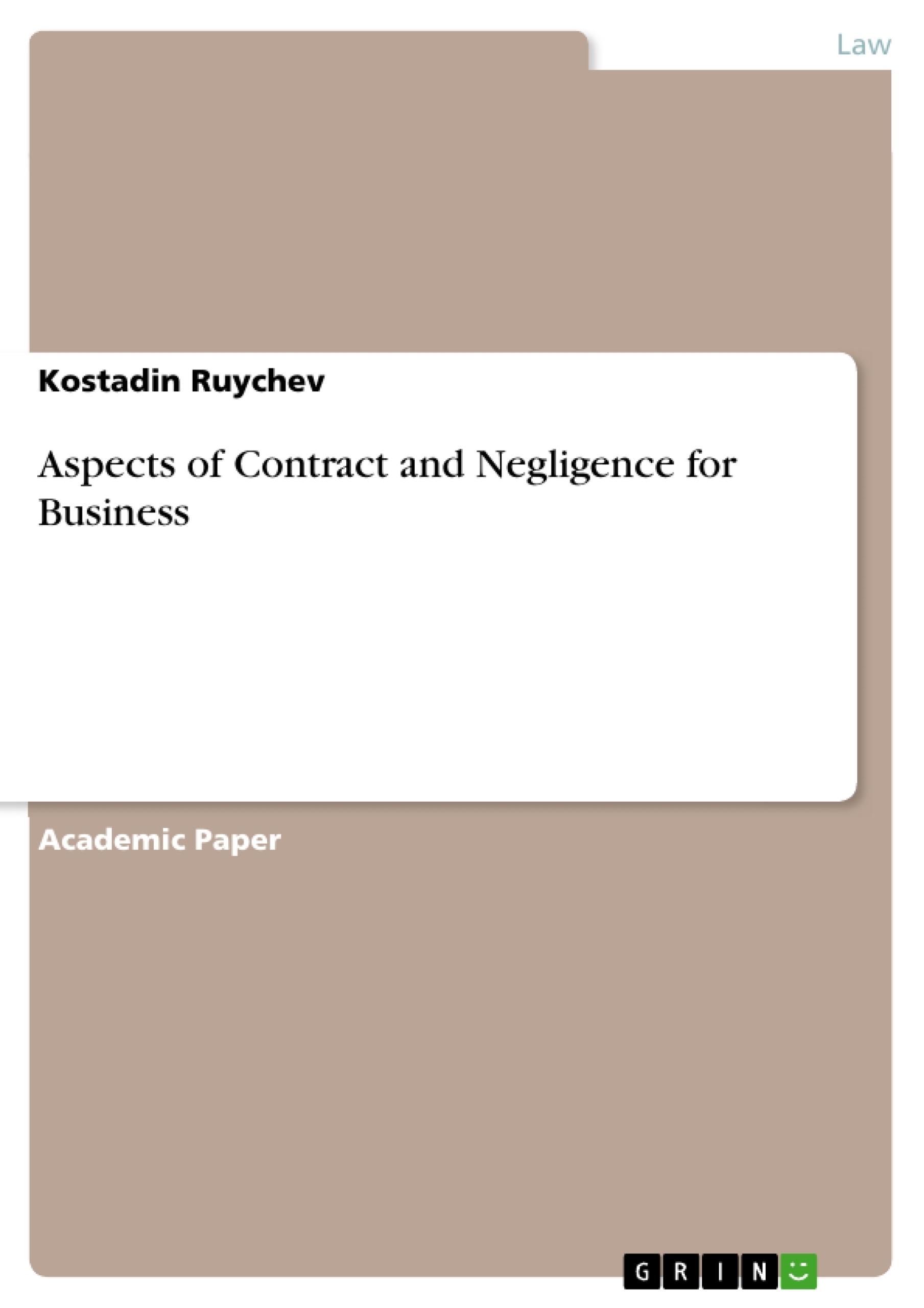The question posed in this paper is this: how tort and contractual liability are related to everything in our world? The examination of this question is imperative since everything in our world is bound with money and money runs the whole world. Unfortunately, the wealthy want to dominate and that is why business is important. Inflation, the stock market, loans or even Telecommunication Company can ruin your life or make you pay extra taxes or fines. This paper, therefore argues that the important things in business, private or public, are the agreements and fixed terms between companies and individuals. While oral agreements can and might be used the written ones are the formal and the most engaging in business relationships. Moreover, contracts are legally enforceable in a court of law. That is why this paper explores the issue by examining the different types of contracts and contractual liability.
Inhaltsverzeichnis (Table of Contents)
- Introduction
- LO 1.1 Essential elements required for the formation of a valid contract.
- LO 1.2 Different types of contract
- LO 1.3 Terms in contracts.
- LO 2.1 The elements of contract.
- LO 2.2 The law on terms in different contract ........
- LO 2.3 The effect of different terms
- LO 3.1 Contrast liability in tort with contractual liability.
- LO 3.2 The nature of liability in negligence..\li>
- LO 3.3 How a business can be vicariously liable
- LO 4.1 The elements of the tort of negligence .....
- LO 4.2 The elements of vicarious liability..\li>
Zielsetzung und Themenschwerpunkte (Objectives and Key Themes)
This paper examines the relationship between tort and contractual liability in the context of business agreements. It focuses on the legal aspects of contracts, including their formation, different types, and terms. The paper also explores the concept of vicarious liability and its application in business.
- The importance of contracts and their role in business relationships.
- The essential elements required for the formation of a valid contract.
- Different types of contracts and their legal implications.
- The distinction between liability in tort and contractual liability.
- The concept of vicarious liability and its application in business.
Zusammenfassung der Kapitel (Chapter Summaries)
The introduction explores the significance of contracts and the legal framework surrounding business relationships. It emphasizes the importance of both written and oral agreements in ensuring fairness and enforceability.
The first chapter delves into the essential elements required for the formation of a valid contract. It discusses the "mirror image rule" and the necessity of capacity and lawful objectives. The chapter further examines the concept of innominate terms and provides relevant case studies.
The second chapter delves into the distinction between conditions and warranties in contracts. It analyzes how the classification of a term can impact the remedies available to parties in case of breach. The chapter also explores the concept of "ordinary puff" and its application in business contracts.
The third chapter contrasts liability in tort with contractual liability. It introduces the concept of vicarious liability, which holds one party responsible for the unlawful actions of a third party.
Schlüsselwörter (Keywords)
The key terms and concepts explored in this paper include: contracts, tort, negligence, vicarious liability, conditions, warranties, offer, acceptance, intention to create legal relations, capacity, lawful objective, innominate term, mirror image rule, "ordinary puff," business efficacy, and implied terms.
- Arbeit zitieren
- Kostadin Ruychev (Autor:in), 2015, Aspects of Contract and Negligence for Business, München, GRIN Verlag, https://www.grin.com/document/437362



